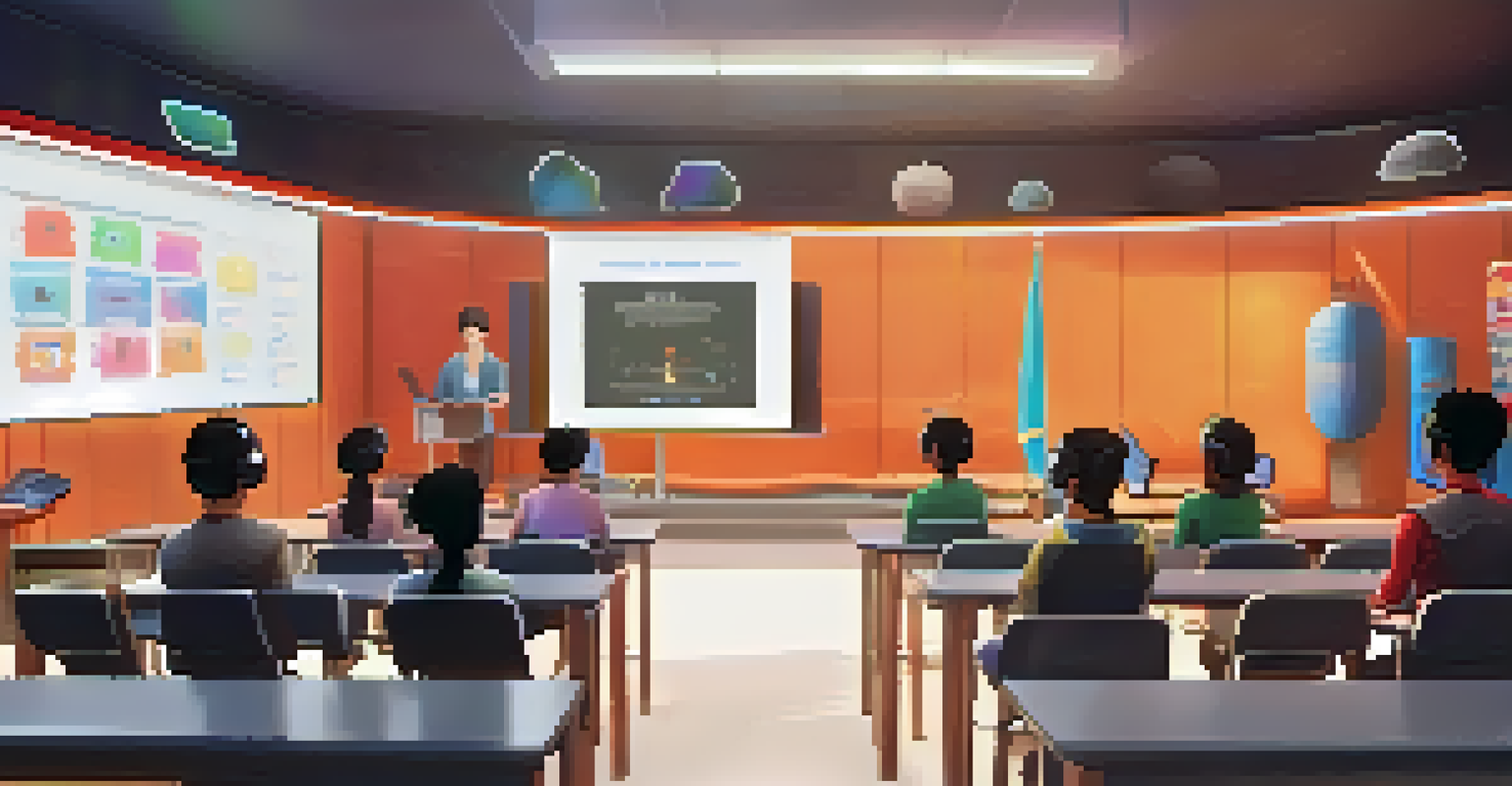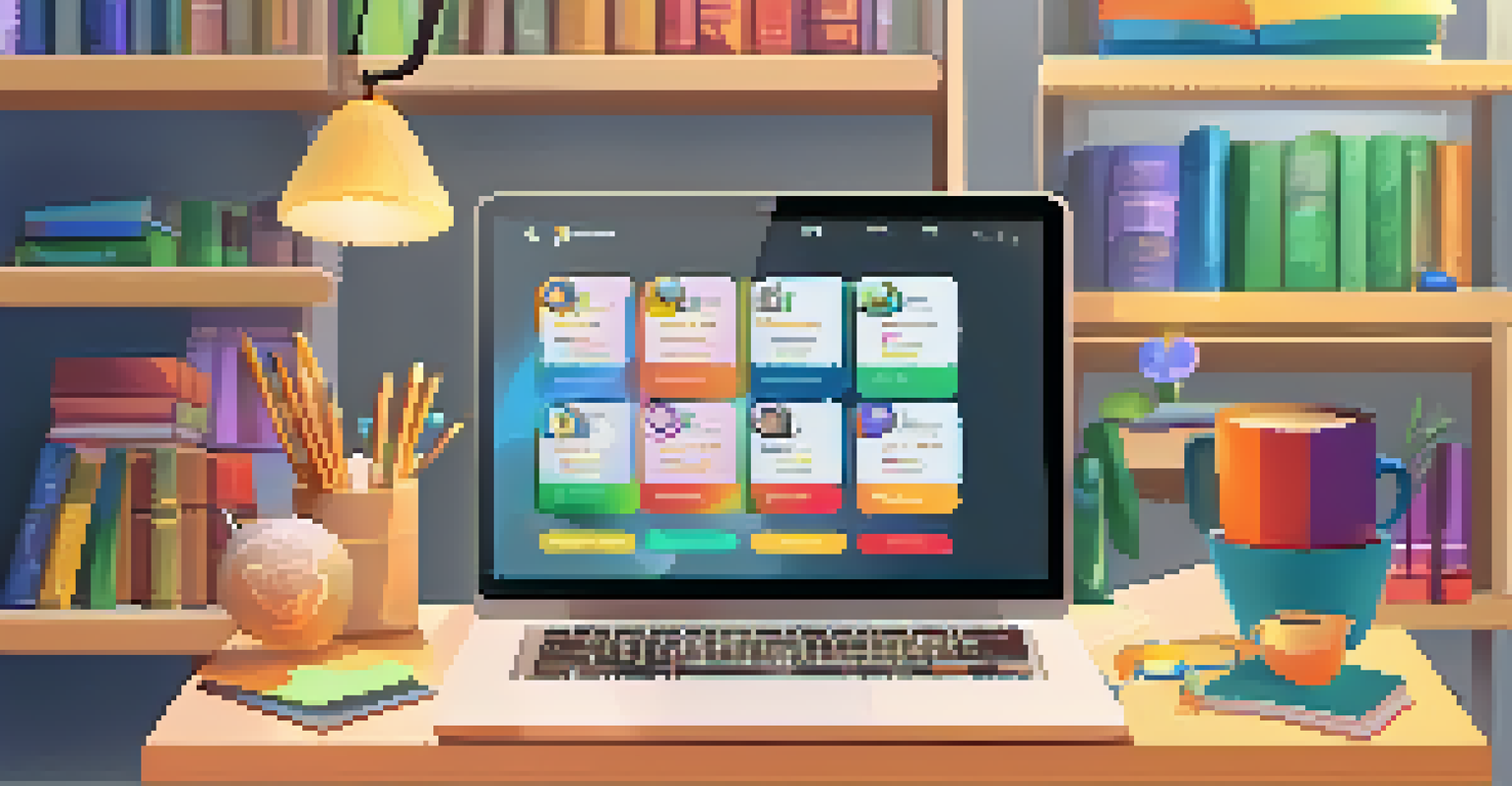Integrating Technology with CBT in Educational Settings

Understanding CBT and Its Role in Education
Cognitive Behavioral Therapy (CBT) is a structured, goal-oriented approach that helps students address negative thought patterns. It encourages them to identify and challenge these thoughts, fostering healthier behaviors and emotional responses. In educational settings, CBT can be particularly beneficial for students dealing with anxiety, depression, or stress.
The greatest weapon against stress is our ability to choose one thought over another.
By integrating CBT into the classroom, educators can create an environment that promotes mental well-being. This involves teaching students coping strategies and problem-solving skills that empower them to tackle challenges effectively. The ultimate goal is to equip students with the tools they need to thrive academically and personally.
Moreover, when students understand their emotions and thought processes, they become more resilient. They learn to self-regulate their feelings and behaviors, leading to improved focus and academic performance. In this way, CBT serves as a valuable framework for fostering a supportive learning atmosphere.
The Role of Technology in Enhancing CBT
Technology has transformed many aspects of our lives, and education is no exception. With the rise of digital tools, integrating technology into CBT can make the therapy process more accessible and engaging for students. For example, mobile apps designed for mental health can offer resources and exercises that reinforce CBT principles.

These tools can help students practice CBT techniques outside the classroom, promoting consistency in their mental health efforts. Features like journaling, mood tracking, and guided meditations encourage self-reflection and mindfulness. By making these resources readily available, students can work on their mental health at their own pace.
CBT Empowers Students in Education
Cognitive Behavioral Therapy helps students identify and challenge negative thoughts, fostering resilience and improving academic performance.
Additionally, technology enables educators to monitor student progress more effectively. Online platforms can provide data analytics that highlight which strategies are working and which may need adjustment. This real-time feedback loop can enhance the therapeutic experience and ensure that students receive the support they need.
Blending CBT with E-Learning Approaches
E-learning has gained immense popularity, especially in recent years, and combining it with CBT can be a game-changer. Online courses and modules can be designed to teach CBT techniques in a structured manner. This allows students to engage with the material in a way that suits their learning style and pace.
Technology is best when it brings people together.
For instance, interactive videos and quizzes can make learning about cognitive distortions both fun and informative. Students can practice identifying these distortions in a controlled environment, building their skills gradually. This hands-on approach helps reinforce the lessons learned during face-to-face sessions.
Moreover, the flexibility of e-learning means that students can access CBT resources anytime and anywhere. This is particularly beneficial for those who may feel anxious about attending in-person sessions. By providing a safe space for exploration, e-learning can enhance students' comfort levels and willingness to engage with CBT.
Utilizing Virtual Reality in CBT Practices
Virtual reality (VR) has emerged as an innovative tool in various fields, including education and therapy. In the context of CBT, VR can create immersive environments that allow students to confront their fears in a safe setting. For instance, a student with social anxiety could practice public speaking in a virtual classroom without the pressure of a real audience.
This technology offers a unique opportunity for experiential learning, making abstract concepts more tangible. By simulating real-life scenarios, students can apply CBT techniques in a controlled and supportive environment. This hands-on experience can significantly enhance their confidence and coping skills.
Technology Enhances CBT Accessibility
Digital tools and platforms make CBT techniques more engaging and accessible, allowing students to practice mental health strategies at their own pace.
Moreover, VR can cater to diverse learning needs, making CBT more inclusive. Students who might struggle with traditional therapeutic approaches can find new ways to engage with the material. As this technology continues to develop, its potential to revolutionize CBT in educational settings is immense.
Incorporating Gamification into CBT Strategies
Gamification involves applying game design elements to non-game contexts, and it's a fantastic way to make CBT more engaging for students. By integrating elements like points, badges, and leaderboards, educators can motivate students to actively participate in their mental health journey. This playful approach can make serious topics feel more accessible.
For example, educators can create challenges that encourage students to practice CBT techniques daily, rewarding them for their efforts. This not only reinforces learning but also fosters a sense of community as students share their experiences and support one another. The social aspect can be particularly beneficial for students who feel isolated in their struggles.
Additionally, gamification can help students track their progress in a visual and enjoyable manner. As they complete challenges and earn rewards, they can see their growth and development over time. This positive reinforcement can boost their confidence and encourage them to continue working on their mental health.
Building a Supportive Online Community for Students
Creating a supportive online community is essential for students engaging in CBT. Social media platforms and online forums can provide spaces for students to share their experiences and connect with peers facing similar challenges. This sense of belonging can be incredibly comforting and can enhance the effectiveness of CBT.
In these communities, students can exchange tips, resources, and encouragement, fostering a collaborative learning environment. When students realize they are not alone in their struggles, it can reduce feelings of isolation and stigma. The shared experiences can create a safe space for vulnerability and growth.
Community Support Boosts CBT Effectiveness
Creating online communities enables students to share experiences and resources, reducing feelings of isolation and enhancing their mental health journey.
Moreover, educators can facilitate these online communities by guiding discussions and providing resources. By being present in these spaces, they can ensure that conversations remain constructive and supportive. This proactive approach can help students feel valued and understood, ultimately enhancing their overall experience with CBT.
Evaluating the Impact of Technology on CBT Outcomes
As with any educational initiative, evaluating the effectiveness of integrating technology with CBT is crucial. Educators should collect data on student progress, engagement levels, and overall mental health outcomes. This information can help identify which tools and techniques are most beneficial and which may need refinement.
Feedback from students can also play a significant role in this evaluation process. By soliciting their opinions on the technology used in CBT, educators can gain insights into their experiences. This collaborative approach ensures that the integration of technology remains student-centered and responsive to their needs.

Ultimately, continuous assessment allows for ongoing improvement in the integration of technology with CBT. By staying attuned to student feedback and outcomes, educators can adapt and innovate, ensuring that they are providing the best possible support for their students' mental health.